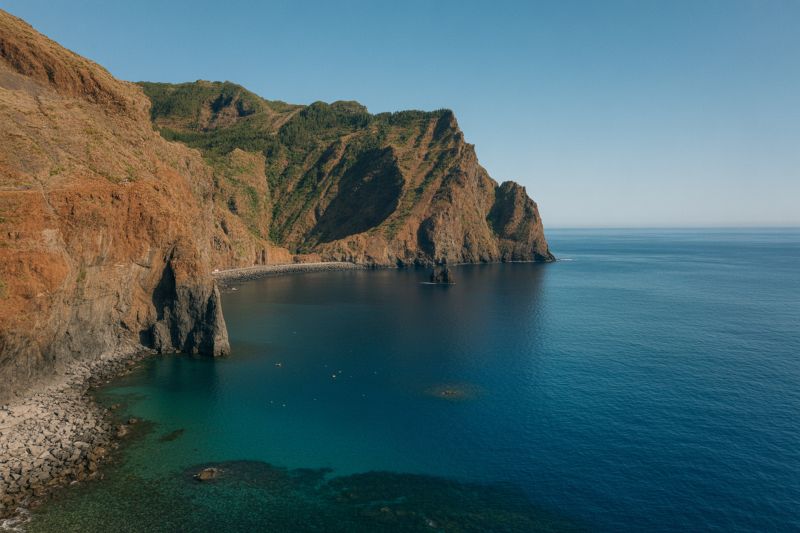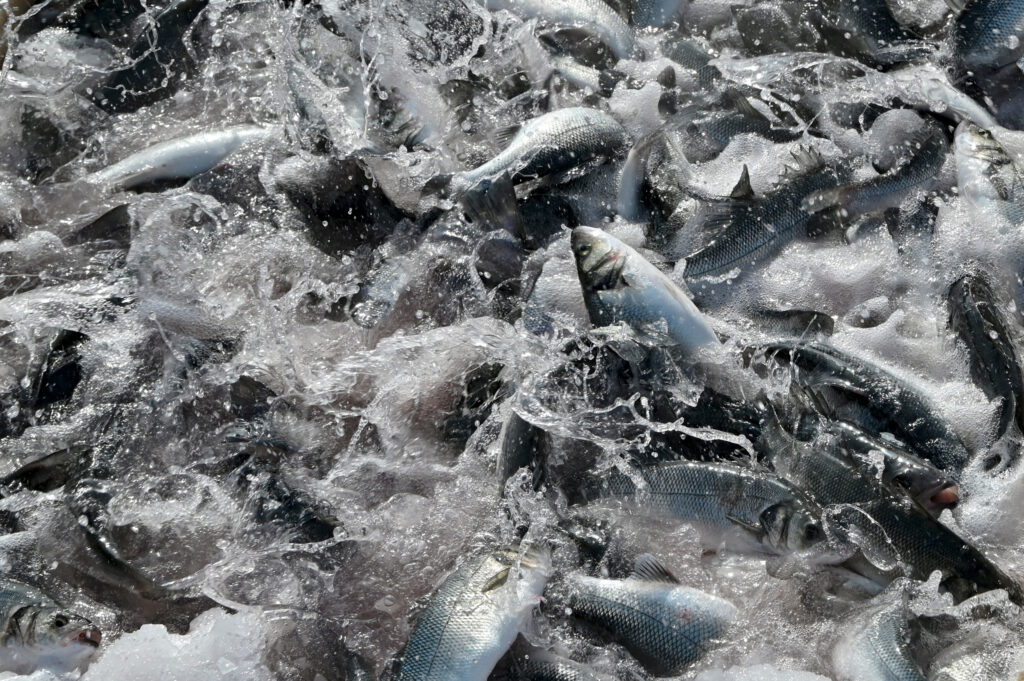Portugal Creates New Marine Reserve Around Madeira to Protect Marine Life and Boost Travel, Get the Details Here – Travel And Tour World

Report on the Establishment of the Madeira-Tore and Gorringe Bank Marine Reserve and its Alignment with Sustainable Development Goals
1.0 Executive Summary
On November 2, 2025, the government of Portugal announced the creation of the Madeira-Tore and Gorringe Bank Marine Reserve, a landmark initiative significantly advancing the nation’s commitment to marine conservation and the United Nations Sustainable Development Goals (SDGs). This measure will expand Portugal’s priority conservation area to 200,000 square kilometers, positioning the country to achieve its goal of protecting 30% of its marine territory by 2026, four years ahead of the 2030 global target. The reserve is a strategic effort to integrate environmental protection with sustainable economic development, directly contributing to SDG 14 (Life Below Water), SDG 8 (Decent Work and Economic Growth), SDG 13 (Climate Action), and SDG 17 (Partnerships for the Goals).
2.0 Alignment with SDG 14: Life Below Water
The primary objective of the marine reserve is the conservation and sustainable use of marine resources, directly addressing the targets of SDG 14.
2.1 Conservation and Biodiversity Targets
- Exceeding Global Goals: The initiative ensures Portugal will meet the “30×30” target of conserving 30% of its marine territory by 2026, surpassing the timeline set by the UN’s 2030 biodiversity framework.
- Ecosystem Protection: The reserve will protect critical marine ecosystems, including the biodiverse Gorringe Ridge, which functions as a nursery for marine life.
- Future Commitments: Following this milestone, the government plans to designate at least 10% of national waters as fully protected areas where all extractive activities are prohibited, further strengthening its commitment to SDG 14.
2.2 Sustainable Fisheries Management
The reserve is designed to ensure the long-term viability of the fishing industry, in line with SDG 14.4 (regulating harvesting and ending overfishing).
- By protecting marine nurseries, the reserve is expected to restore fish populations.
- This restoration will lead to more stable and sustainable catches for local fishing communities over time.
- The initiative promotes responsible fishing practices as a core component of the regional economy.
3.0 Contribution to Sustainable Economic Growth and Responsible Tourism (SDG 8 & SDG 12)
The project is a cornerstone of Portugal’s strategy to expand its “blue economy,” which currently constitutes 5% of the national GDP. It integrates conservation with economic opportunities that promote sustainable growth and responsible production and consumption patterns.
3.1 Development of the Blue Economy
- Economic Diversification: The reserve will foster innovation in marine education, sustainable fisheries, and ocean-based research.
- Sustainable Resource Use: The Secretary of State for Fisheries and the Sea, Salvador Malheiro, emphasized that marine protection directly contributes to economic growth by ensuring natural resources are managed sustainably for future generations.
3.2 Fostering Sustainable Eco-Tourism
The initiative positions Madeira as a premier European destination for sustainable tourism, aligning with SDG 8.9 (promoting sustainable tourism that creates jobs) and SDG 12.
- New Tourism Opportunities: The protected status will create new avenues for low-impact activities such as guided diving, whale watching, and educational eco-tours.
- Market Alignment: The strategy meets the growing global demand from travelers seeking destinations that prioritize environmental responsibility and biodiversity protection.
- Local Industry Support: Tourism operators in Madeira are developing eco-friendly packages, leveraging the reserve’s environmental prestige to attract visitors and stimulate local economic growth.
4.0 Advancing Climate Action and Scientific Innovation (SDG 13 & SDG 9)
The marine reserve serves a dual function of protecting biodiversity and contributing to global climate change mitigation efforts, while also creating a hub for scientific research and innovation.
4.1 Climate Change Mitigation
- Carbon Sequestration: The reserve will safeguard vital marine ecosystems, such as coral reefs and seagrass beds, which act as natural carbon sinks, absorbing atmospheric CO₂ and contributing to the goals of SDG 13 (Climate Action).
- Ecological Resilience: Protecting these habitats enhances the ocean’s overall health and resilience to climate change impacts.
4.2 A Hub for Research and Innovation
The protected area will serve as a living laboratory for scientific exploration, fostering innovation in line with SDG 9 (Industry, Innovation, and Infrastructure).
- International Collaboration: The reserve is expected to attract global researchers studying marine biodiversity, climate change, and sustainable fisheries management.
- Knowledge Building: This focus on research will integrate Madeira into international environmental networks and advance scientific understanding of the Atlantic Ocean.
5.0 Strategic Partnerships for the Goals (SDG 17)
The successful implementation of this initiative exemplifies the principles of SDG 17 by relying on strong cross-institutional collaboration.
5.1 Collaborative Governance
- The project is a joint effort between Portugal’s national government and the regional government of Madeira.
- This partnership ensures that conservation objectives are integrated with local development priorities, fostering community participation and local pride.
- This model of governance demonstrates a commitment to working collaboratively to achieve shared sustainable development objectives.
Analysis of Sustainable Development Goals (SDGs) in the Article
1. Which SDGs are addressed or connected to the issues highlighted in the article?
The article on Portugal’s Madeira-Tore and Gorringe Bank Marine Reserve connects to several Sustainable Development Goals (SDGs) by highlighting efforts in marine conservation, sustainable economic growth, climate action, and partnerships.
- SDG 14: Life Below Water: This is the most prominent SDG addressed. The entire article revolves around the creation of a massive marine reserve to conserve and sustainably use the oceans, seas, and marine resources. The initiative aims to protect critical ecosystems, restore marine biodiversity, and ensure the sustainability of marine life.
- SDG 8: Decent Work and Economic Growth: The article connects marine conservation directly to economic development. It discusses how the reserve will strengthen Portugal’s “blue economy,” which already contributes 5% to the national GDP. It also emphasizes the creation of new economic opportunities through sustainable tourism (eco-tours, diving, whale watching) and responsible fishing practices.
- SDG 13: Climate Action: The article explicitly mentions the role of the marine reserve in combating climate change. It states that protected marine ecosystems, such as coral reefs and seagrass beds, function as “carbon sinks that help absorb atmospheric CO₂,” thereby contributing to global climate mitigation efforts.
- SDG 17: Partnerships for the Goals: The success of the initiative is attributed to effective collaboration. The article describes it as a “cross-institutional attempt” that brought together Portugal’s national government and regional aides in Madeira, showcasing a partnership to achieve sustainable development goals.
2. What specific targets under those SDGs can be identified based on the article’s content?
Several specific targets within the identified SDGs are directly supported by the actions described in the article.
-
Under SDG 14 (Life Below Water):
- Target 14.2: “By 2020, sustainably manage and protect marine and coastal ecosystems to avoid significant adverse impacts…” The article directly addresses this by describing the reserve’s purpose to “protect critical ecosystems and help restore marine biodiversity.”
- Target 14.5: “By 2020, conserve at least 10 per cent of coastal and marine areas…” The article shows Portugal surpassing this target by aiming to conserve “30 percent of its marine territory by 2026” and planning to designate “at least 10% of national waters as fully protected.”
- Target 14.a: “Increase scientific knowledge, develop research capacity and transfer marine technology…” The initiative is designed to “attract global researchers studying marine biodiversity, climate change, and sustainable fisheries management” and open a “new, dynamic space for research.”
-
Under SDG 8 (Decent Work and Economic Growth):
- Target 8.9: “By 2030, devise and implement policies to promote sustainable tourism that creates jobs and promotes local culture and products.” The article details how the reserve is a “powerful engine for eco-tourism,” creating opportunities for diving and whale watching, and positioning Madeira as a “premier destination for nature-based tourism.”
-
Under SDG 13 (Climate Action):
- Target 13.3: “Improve education, awareness-raising and human and institutional capacity on climate change mitigation…” The article implies progress on this target by highlighting the reserve’s role as a carbon sink and its potential to “foster community participation in conservation programs, and inspire younger generations to engage in ocean science and sustainability careers.”
-
Under SDG 17 (Partnerships for the Goals):
- Target 17.14: “Enhance policy coherence for sustainable development.” The project is a clear example of policy coherence, as it integrates environmental conservation goals (protecting marine life) with economic development priorities (blue economy, tourism).
3. Are there any indicators mentioned or implied in the article that can be used to measure progress towards the identified targets?
The article provides several quantitative and qualitative indicators that can be used to measure progress.
-
Indicator for Target 14.5: The article provides precise figures that align with Indicator 14.5.1 (Coverage of protected areas in relation to marine areas).
- The total conservation impact area will be extended to 200,000 square kilometers.
- The primary goal is to conserve 30 percent of its marine territory by 2026.
- A future goal is to designate at least 10% of national waters as fully protected.
-
Indicator for Target 8.9: While not providing new figures, the article references a baseline indicator related to Indicator 8.9.1 (Tourism direct GDP as a proportion of total GDP).
- It states that the blue economy already accounts for around 5% of the national GDP, providing a baseline from which to measure the economic impact of the new reserve and associated sustainable tourism.
-
Implied Indicators: The article also implies other, more qualitative indicators.
- Increase in scientific research activities: Progress could be measured by the number of research projects, scientific publications, and international collaborations focused on the reserve.
- Growth in eco-tourism: This could be measured by the number of eco-tour operators, visitor numbers for sustainable activities (diving, whale watching), and the development of “eco-friendly packages.”
- Health of fish stocks: The article suggests that “well-managed marine reserves lead to larger fish populations and more stable catches,” which can be monitored over time.
4. Summary Table of SDGs, Targets, and Indicators
| SDGs | Targets | Indicators Identified in the Article |
|---|---|---|
| SDG 14: Life Below Water |
14.2: Sustainably manage and protect marine and coastal ecosystems. 14.5: Conserve at least 10% of coastal and marine areas. 14.a: Increase scientific knowledge and research capacity. |
– Creation of a 200,000 square kilometer priority conservation area. – Goal to conserve 30% of marine territory by 2026. – Plan to designate 10% of national waters as fully protected. – Attraction of global researchers for marine biodiversity studies. |
| SDG 8: Decent Work and Economic Growth | 8.9: Promote sustainable tourism that creates jobs. |
– The blue economy accounts for 5% of national GDP (baseline). – Creation of new opportunities for diving, whale watching, and marine research. – Development of eco-friendly packages by local tour companies. |
| SDG 13: Climate Action | 13.3: Improve education and awareness on climate change mitigation. |
– Protection of marine ecosystems (coral reefs, seagrass beds) that act as carbon sinks. – Fostering community participation and inspiring careers in ocean science. |
| SDG 17: Partnerships for the Goals | 17.14: Enhance policy coherence for sustainable development. |
– “Cross-institutional attempt” bringing together the national government and regional aides in Madeira. – Integration of conservation goals with local economic development priorities. |
Source: travelandtourworld.com
What is Your Reaction?
 Like
0
Like
0
 Dislike
0
Dislike
0
 Love
0
Love
0
 Funny
0
Funny
0
 Angry
0
Angry
0
 Sad
0
Sad
0
 Wow
0
Wow
0




















































.jpg.webp?itok=0ZsAnae9#)



























